Premium Only Content
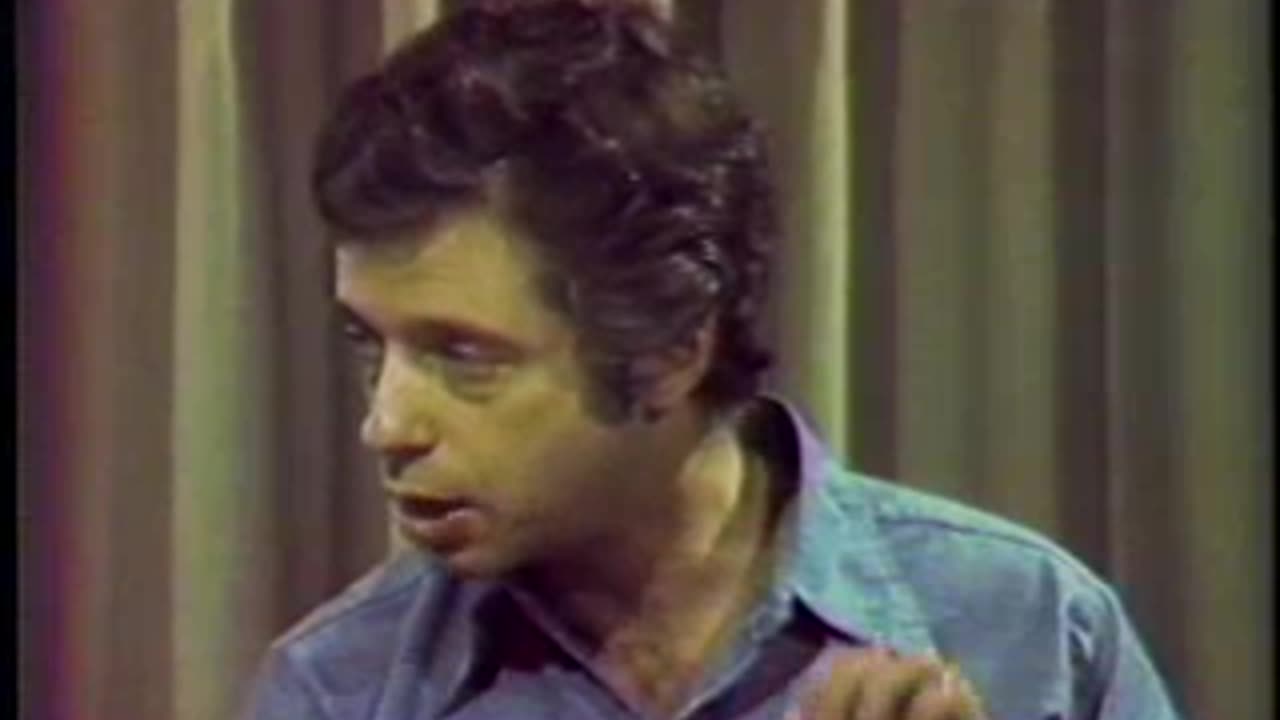
Exposing Covert Operations: U.S. Intelligence Tactics and Global Intrigues (1982)
More CIA stories from John Stockwell: https://thememoryhole.substack.com/
In this second part of the series, the spotlight is on the intricate and varied activities of U.S. intelligence agencies and their proxies. The discussion touches upon specific instances: the training of Salvadoran army troops in torture techniques by U.S. Green Berets, the Seychelles Islands coup attempt, Argentine torture squads, South African engagements in Angola and Namibia, the Klan coup attempt in Dominica, and efforts to destabilize the Mozambique government. These incidents are extensively covered in Louis Wolf's Covert Action Information Bulletin, an outlet the U.S. government aims to silence.
Furthermore, the conversation delves into the methods employed by the CIA, focusing on "disinformation" tactics. These tactics involve manipulating public opinion through planted stories in the press and the financial and ideological support of right-wing newspapers. Recorded in May 1982 and drawing from news spanning June 1983 and May 1982, this installment brings to light a spectrum of covert operations and strategies, shedding crucial light on their impact both domestically and globally.
The Guatemalan Civil War was a civil war in Guatemala fought from 1960 to 1996 between the government of Guatemala and various leftist rebel groups. The government forces have been condemned for committing genocide against the Maya population of Guatemala during the civil war and for widespread human rights violations against civilians.[15] The context of the struggle was based on longstanding issues of unfair land distribution. Wealthy Guatemalans, mainly European-descended, and foreign companies such as the American United Fruit Company had dominated control over much of the land, and paid almost zero taxes in return – leading to conflicts with the rural indigenous poor who worked the land under miserable terms.
Democratic elections during the Guatemalan Revolution in 1944 and 1951 had brought popular leftist governments to power, who sought to ameliorate working conditions and implement land distribution. A United States-backed coup d'état in 1954 installed the military regime of Carlos Castillo Armas to prevent reform, who was followed by a series of right-wing military dictators.
The Civil War started on 13 November 1960, when a group of left-wing junior military officers led a failed revolt against the government of General Ydigoras Fuentes. The surviving officers created a rebel movement known as MR-13. In 1970, Colonel Carlos Manuel Arana Osorio became the first of a series of military dictators representing the Institutional Democratic Party or PID. The PID dominated Guatemalan politics for twelve years through electoral frauds favoring two of Colonel Carlos Arana's protégés (General Kjell Eugenio Laugerud García in 1974 and General Romeo Lucas García in 1978). The PID lost its grip on Guatemalan politics when General Efraín Ríos Montt, together with a group of junior army officers, seized power in a military coup on 23 March 1982. In the 1970s social discontent continued among the large populations of indigenous people and peasants. Many organized into insurgent groups and began to resist the government forces.[16]
During the 1980s, the Guatemalan military assured almost absolute government power for five years; it had successfully infiltrated and eliminated enemies in every socio-political institution of the nation, including the political, social, and intellectual classes.[17] In the final stage of the civil war, the military developed a parallel, semi-visible, low profile but high-effect, control of Guatemala's national life.[18]
It is estimated that 140,000 to 200,000 people were killed or forcefully "disappeared" during the conflict, including 40,000 to 50,000 disappearances. While fighting took place between government forces and rebel groups, much of the violence was a large coordinated campaign of one-sided violence by the Guatemalan state against the civilian population from the mid-1960s onward. The military intelligence services coordinated killings and "disappearances" of opponents of the state.
In rural areas, where the insurgency maintained its strongholds, the government repression led to large massacres of the peasantry, including entire villages. These took place first in the departments of Izabal and Zacapa (1966–68), and in the predominantly Mayan western highlands from 1978 onward. In the early 1980s, the widespread killing of the Mayan people was considered a genocide. Other victims of the repression included activists, suspected government opponents, returning refugees, critical academics, students, left-leaning politicians, trade unionists, religious workers, journalists, and street children.[16] The "Comisión para el Esclarecimiento Histórico" has estimated that government forces committed 93% of human right abuses in the conflict, with 3% committed by the guerrillas.[19]
In 2009, Guatemalan courts sentenced former military commissioner Felipe Cusanero, the first person to be convicted of the crime of ordering forced disappearances. In 2013, the government conducted a trial of former president Efraín Ríos Montt on charges of genocide for the killing and disappearances of more than 1,700 indigenous Ixil Maya during his 1982–83 rule. The charges of genocide were based on the "Memoria del Silencio" report – prepared by the UN-appointed Commission for Historical Clarification. The Commission concluded that the government could have committed genocide in Quiché between 1981 and 1983.[8] Montt was the first former head of state to be tried for genocide by his own country's judicial system; he was found guilty and sentenced to 80 years in prison.[20] A few days later, however, the sentence was reversed by the country's high court. They called for a renewed trial because of alleged judicial anomalies. The trial began again on 23 July 2015, but the jury had not reached a verdict before Montt died in custody on 1 April 2018.[21]
Background
See also: Rafael Carrera, Manuel Estrada Cabrera, José María Orellana, Jorge Ubico, Juan José Arévalo, and United Fruit Company
After the 1871 revolution, the Liberal government of Justo Rufino Barrios escalated coffee production in Guatemala, which required much land and many workers. Barrios established the Settler Rule Book, which forced the native population to work for low wages for the landowners, who were Criollos and later German settlers.[22] Barrios also confiscated the common native land, which had been protected during the Spanish Colony and during the Conservative government of Rafael Carrera.[23] He distributed it to his Liberal friends, who became major landowners.[22]
In the 1890s, the United States began to implement the Monroe Doctrine, pushing out European colonial powers in Latin America. Its commercial interests established U.S. hegemony over resources and labor in the region. The dictators that ruled Guatemala during the late 19th and early 20th centuries were very accommodating to U.S. business and political interests, because they personally benefitted. Unlike in such nations as Haiti, Nicaragua, and Cuba, the U.S. did not have to use overt military force to maintain dominance in Guatemala. The Guatemalan military/police worked closely with the U.S. military and State Department to secure U.S. interests. The Guatemalan government exempted several U.S. corporations from paying taxes, especially the United Fruit Company. It also privatized and sold off publicly owned utilities, and gave away huge swaths of public land.[24]
President Manuel Estrada Cabrera's official portrait from his last presidential term. During his government, the American United Fruit Company became a major economic and political force in Guatemala.
Societal structure
Main article: Manuel Estrada Cabrera
In 1920, the prince Wilhelm of Sweden visited Guatemala and described Guatemalan society and Estrada Cabrera government in his book Between Two Continents, notes from a journey in Central America, 1920.[25] He analyzed Guatemalan society at the time, pointing out that even though it called itself a "Republic", Guatemala had three sharply defined classes:[26]
Criollos: a minority made up of descendants of the Spaniards who conquered Central America; by 1920, the Criollos made up much of the members of both political parties and the elite in the country. For centuries they had intermarried with Indians and other people of European ancestry. The great majority had some indigenous ancestry but largely identified with European culture.[27] They led the country both politically and intellectually, partly because their education was far superior to that of most of the rest of the residents. Only criollos were admitted to the main political parties,[26] and their families largely controlled and, for the most part, owned the cultivated parts of the country.[27]
Ladinos: middle class. Descendants of peoples of indigenous, African, and criollo ancestry, they held almost no political power in 1920. They made up the bulk of artisans, storekeepers, tradesmen, and minor officials.[28] In the eastern part of the country, they worked as agricultural laborers.[28]
Indians: The majority of the population was composed of native or indigenous Guatemalans, most of whom were Mayan peoples. Many had little to no formal education. Many natives served as soldiers for the Army, and they were often raised to positions of considerable trust.[28] They made up most of the agricultural workers.
The prince classified them into three categories:
"Mozos colonos": settled on the plantations. Were given a small piece of land to cultivate on their own account, in return for work in the plantations a certain number of months a year, similar to sharecroppers or tenant farmers in the US.[28]
"Mozos jornaleros": day-laborers who were contracted to work for certain periods of time.[28] They were paid a daily wage. In theory, each "mozo" was free to dispose of his labor as he or she pleased, but they were bound to the property by economic ties. They could not leave until they had paid off their debt to the owner. They were often victimized by owners, who encouraged them to get into debt by granting credit or lending cash. The owners recorded the accounts and the mozos were usually illiterate and at a disadvantage. [29] If the mozos ran away, the owner could have them pursued and imprisoned by the authorities. Associated costs would be added to the ever-increasing debt of the mozo. If one of them refused to work, he or she was put in prison on the spot.[29] The wages were also extremely low. The work was done by contract, but since every "mozo" starts with a large debt, the usual advance on engagement, they effectively became servants indentured to the landowner.[30]
"Independent tillers": Living in the most remote provinces, some people, often Mayan, survived by growing crops of maize, wheat or beans. They tried to cultivate some excess to sell in the market places of the towns. They often carried their goods on their back for up to 40 kilometres (25 mi) a day to reach such markets.[30]
Jorge Ubico regime
Main article: Jorge Ubico
In 1931, the dictator General Jorge Ubico came to power, backed by the United States. While an efficient administrator,[31] he initiated one of the most brutally repressive military regimes in Central American history. Just as Estrada Cabrera had done during his government, Ubico created a widespread network of spies and informants and had political opponents tortured and put to death. A wealthy aristocrat (with an estimated income of $215,000 per year in 1930s dollars) and a staunch anti-communist, he consistently sided with the United Fruit Company, Guatemalan landowners and urban elites in disputes with peasants. After the crash of the New York Stock Exchange in 1929, the peasant system established by Barrios in 1875 to jump start coffee production in the country[32] faltered, and Ubico was forced to implement a system of debt slavery and forced labor to make sure that there was enough labor available for the coffee plantations and that the UFCO workers were readily available.[22] Allegedly, he passed laws allowing landowners to execute workers as a "disciplinary" measure.[33][34][35][36][37] He also identified as a fascist; he admired Mussolini, Franco, and Hitler, saying at one point: "I am like Hitler. I execute first and ask questions later."[38][39][40][41][42] Ubico was disdainful of the indigenous population, calling them "animal-like", and stated that to become "civilized" they needed mandatory military training, comparing it to "domesticating donkeys". He gave away hundreds of thousands of hectares to the United Fruit Company, exempted them from taxes in Tiquisate, and allowed the U.S. military to establish bases in Guatemala.[33][34][35][36][37] Ubico considered himself to be "another Napoleon". He dressed ostentatiously and surrounded himself with statues and paintings of the emperor, regularly commenting on the similarities between their appearances. He militarized numerous political and social institutions—including the post office, schools, and even symphony orchestras—and placed military officers in charge of many government posts. He frequently travelled around the country performing "inspections" in dress uniform, followed by a military escort, a mobile radio station, an official biographer, and cabinet members.[33][43][44][45][46]
After 14 years, Ubico's repressive policies and arrogant demeanor finally led to pacific disobedience by urban middle-class intellectuals, professionals, and junior army officers in 1944. On 1 July 1944, Ubico resigned from office amidst a general strike and nationwide protests. He had planned to hand over power to the former director of policy, General Roderico Anzueto, whom he felt he could control. But his advisors noted that Anzueto's pro-Nazi sympathies had made him unpopular and that he would not be able to control the military. So Ubico instead chose to select a triumvirate of Major General Buenaventura Piñeda, Major General Eduardo Villagrán Ariza, and General Federico Ponce Vaides. The three generals promised to convene the national assembly to hold an election for a provisional president, but when the congress met on 3 July, soldiers held everyone at gunpoint and forced them to vote for General Ponce rather than the popular civilian candidate, Dr. Ramón Calderón. Ponce, who had previously retired from military service due to alcoholism, took orders from Ubico and kept many of the officials who had worked in the Ubico administration. The repressive policies of the Ubico administration were continued.[33][47][48]
John Foster Dulles, Secretary of State of the Eisenhower administration and board member of the United Fruit Company.
Opposition groups began organizing again, this time joined by many prominent political and military leaders, who deemed the Ponce regime unconstitutional. Among the military officers in the opposition were Jacobo Árbenz and Major Francisco Javier Arana. Ubico had fired Árbenz from his teaching post at the Escuela Politécnica, and since then Árbenz had been living in El Salvador, organizing a band of revolutionary exiles. On 19 October 1944, a small group of soldiers and students led by Árbenz and Arana attacked the National Palace in what later became known as the "October Revolution".[49] Ponce was defeated and driven into exile; Árbenz, Arana, and a lawyer named Jorge Toriello established a junta. They declared that democratic elections would be held before the end of the year.[50]
The winner of the 1944 elections was a teaching major named Juan José Arévalo, Ph.D., who had earned a scholarship in Argentina during the government of general Lázaro Chacón due to his superb professor skills. Arévalo remained in South America for a few years, working as a university professor in several countries. Back in Guatemala during the early years of the Jorge Ubico regime, his colleagues asked him to present a project to the president to create the Faculty of Humanism at the National University, to which Ubico was strongly opposed. Realizing the dictatorial nature of Ubico, Arévalo left Guatemala and went back to Argentina. He went back to Guatemala after the 1944 Revolution and ran under a coalition of leftist parties known as the Partido Acción Revolucionaria ("Revolutionary Action Party", PAR), and won 85 percent of the vote in elections that are widely considered to have been fair and open.[51] Arévalo implemented social reforms, including minimum wage laws, increased educational funding, near-universal suffrage (excluding illiterate women), and labor reforms. But many of these changes only benefited the upper-middle classes and did little for the peasant agricultural laborers who made up the majority of the population. Although his reforms were relatively moderate, he was widely disliked by the United States government, the Catholic Church, large landowners, employers such as the United Fruit Company, and Guatemalan military officers, who viewed his government as inefficient, corrupt, and heavily influenced by communists. At least 25 coup attempts took place during his presidency, mostly led by wealthy liberal military officers.[52][53]
In 1944, the "October Revolutionaries" took control of the government. They instituted liberal economic reform, benefiting and politically strengthening the civil and labor rights of the urban working class and the peasants. Elsewhere, a group of leftist students, professionals, and liberal-democratic government coalitions developed, led by Juan José Arévalo and Jacobo Árbenz Guzmán. Decree 900, passed in 1952, ordered the redistribution of fallow land on large estates, threatening the interests of the landowning elite and, mainly, the United Fruit Company.
Given the strong ties of the UFCO with high Eisenhower administration officers such as the brothers John Foster Dulles and Allen Dulles, who were Secretary of State and Central Intelligence Agency (CIA) director, respectively, and were both in the company board,[54] the U.S. government ordered the CIA to launch Operation PBFortune (1952–1954) and halt Guatemala's "communist revolt", as perceived by the United Fruit Company and the U.S. State Department.[54] The CIA chose right-wing Guatemalan Army Colonel Carlos Castillo Armas to lead an "insurrection" in the 1954 Guatemalan coup d'état. Upon deposing the Árbenz Guzmán government, Castillo Armas began to dissolve a decade of social and economic reform and legislative progress, and banned labor unions and left-wing political parties, a disfranchisement of left-wing Guatemalans.[55] He also returned all the confiscated land to the United Fruit and the elite landlords.[54]
A series of military coups d'état followed, featuring fraudulent elections in which only military personnel were the winner candidates. Aggravating the general poverty and political repression motivating the civil war was the widespread socioeconomic discrimination and racism practiced against Guatemalan indigenous peoples, such as the Maya; many later fought in the civil war. Although the indigenous Guatemalans constitute more than half of the national populace, they were landless, having been dispossessed of their lands since the Justo Rufino Barrios times. The landlord upper classes of the oligarchy, generally descendants of Spanish and other Europe immigrants to Guatemala, although often with some mestizo ancestry as well, controlled most of the land after the Liberal Reform of 1871.[56]
Initial phase of the civil war: 1960s and early 1970s
On 13 November 1960, a group of left-wing junior military officers of the Escuela Politécnica national military academy led a failed revolt against the autocratic government (1958–63) of General Ydígoras Fuentes, who had usurped power in 1958, after the assassination of the incumbent Colonel Castillo Armas. The young officers' were outraged by the staggering corruption of the Ydígoras regime, the government's showing of favoritism in giving military promotions and other rewards to officers who supported Ydígoras, and what they perceived as incompetence in running the country. The immediate trigger for their revolt, however, was Ydígoras' decision to allow the U.S. to train an invasion force in Guatemala to prepare for the planned Bay of Pigs Invasion of Cuba without consulting the Guatemalan military and without sharing with the military the payoff he received in exchange from the U.S. government. The military was concerned about the infringement on the sovereignty of their country as unmarked U.S. warplanes piloted by US-based Cuban exiles flew in large numbers over their country and the U.S. established a secret airstrip and training camp at Retalhuleu to prepare for its invasion of Cuba. The rebellion was not ideological in its origins.[57]
The CIA flew B-26 bombers disguised as Guatemalan military jets to bomb the rebel bases because the coup threatened U.S. plans for the invasion of Cuba as well as the Guatemalan regime it supported. The rebels fled to the hills of eastern Guatemala and neighboring Honduras and formed the kernel of what became known as MR-13 (Movimiento Revolucionario 13 Noviembre).[58] The surviving officers fled into the hills of eastern Guatemala, and later established communication with the Cuban government of Fidel Castro. By 1962, those surviving officers had established an insurgent movement known as the MR-13, named after the date of the officers' revolt.
MR-13 attacks United Fruit Company office
They returned in early 1962, and on 6 February 1962 in Bananera they attacked the offices of the United Fruit Company (present-day Chiquita Brands), an American corporation that controlled vast territories in Guatemala as well as in other Central American countries. The attack sparked sympathetic strikes and university student walkouts throughout the country, to which the Ydígoras regime responded with a violent crackdown. This violent crackdown sparked the civil war.[58]
Through the early phase of the conflict, the MR-13 was a principal component of the insurgent movement in Guatemala.[59] The MR-13 later initiated contact with the outlawed PGT (Guatemalan Labour Party, composed and led by middle-class intellectuals and students) and a student organization called the Movimiento 12 de Abril (12 April Movement) and merged into a coalition guerilla organization called the Rebel Armed Forces (FAR) in December 1962. Also affiliated with the FAR was the FGEI (Edgar Ibarra Guerrilla Front). The MR-13, PGT and the FGEI each operated in different parts of the country as three separate "frentes" (fronts); the MR-13 established itself in the mostly Ladino departments of Izabal and Zacapa, the FGEI established itself in Sierra de las Minas and the PGT operated as an urban guerrilla front. Each of these three "frentes" (comprising no more than 500 combatants) were led by former members of the 1960 army revolt, who had previously been trained in counterinsurgency warfare by the United States.[60][61][62][63][64]
U.S. intelligence and counterinsurgency assistance to government
1961 CIA map of British Honduras-Guatemala border
In 1964 and 1965, the Guatemalan Armed Forces began engaging in counterinsurgency operations against the MR-13 in eastern Guatemala. In February and March 1964, the Guatemalan Air Force began a selective bombing campaign against MR-13 bases in Izabal, which was followed by a counterinsurgency sweep in the neighboring province of Zacapa under the code-name "Operation Falcon" in September and October of the following year.[65]
It was at this phase in the conflict that the U.S. government sent Green Berets and CIA advisers to instruct the Guatemalan military in counterinsurgency (anti-guerrilla warfare). In addition, U.S. police and "Public Safety" advisers were sent to reorganize the Guatemalan police forces.[66] In response to increased insurgent activity in the capital, a specialty squad of the National Police was organized in June 1965 called Comando Seis ('Commando Six') to deal with urban guerilla assaults. 'Commando Six' received special training from the U.S. Public Safety Program and money and weapons from U.S. Public Safety Advisors.[67]
In November 1965, U.S. Public Safety Advisor John Longan arrived in Guatemala on temporary loan from his post in Venezuela to assist senior military and police officials in establishing an urban counterinsurgency program.[68] With the assistance of Longan, the Guatemalan Military launched "Operation Limpieza" (Operation Cleanup) an urban counterinsurgency program under the command of Colonel Rafael Arriaga Bosque. This program coordinated the activities of all of the country's main security agencies (including the Army, the Judicial Police and the National Police) in both covert and overt anti-guerrilla operations. Under Arriaga's direction, the security forces began to abduct, torture and kill the PGT's key constituents.[69]
With money and support from U.S. advisors, President Enrique Peralta Azurdia established a Presidential Intelligence Agency in the National Palace, under which a telecommunications database is known as the Regional Telecommunications Center or La Regional existed, linking the National Police, the Treasury Guard, the Judicial Police, the Presidential House and the Military Communications Center via a VHF-FM intracity frequency. La Regional also served as a depository for the names of suspected "subversives" and had its own intelligence and operational unit attached to it known as the Policía Regional.[70] This network was built on the "Committees against Communism" created by the CIA after the coup in 1954.[71]
Escalation of state terror
On 3 and 5 March 1966, the G-2 (military intelligence) and the Judicial Police raided three houses in Guatemala City, capturing twenty-eight trade unionists and members of the PGT. Those captured included most of the PGT's central committee and peasant federation leader Leonardo Castillo Flores. All subsequently "disappeared" while in the custody of the security force and became known in subsequent months by the Guatemalan press as "the 28". This incident was followed by a wave of unexplained "disappearances" and killings in Guatemala City and in the countryside which were reported by the Guatemala City press. When press censorship was lifted for a period, relatives of "the 28" and of others who had "disappeared" in the Zacapa-Izabal military zone went to the press or to the Association of University Students (AEU). Using its legal department, the AEU subsequently pressed for habeas corpus on behalf of the "disappeared" persons. The government denied any involvement in the killings and disappearances. On 16 July 1966, the AEU published a detailed report on abuses in the last months of the Peralta regime in which it named thirty-five individuals as involved in killings and disappearances, including military commissioners and members of the Ambulant Military Police (PMA) in coordination with the G-2.[72] After the publication of this report, "death-squad" attacks on the AEU and on the University of San Carlos began to intensify. Many law students and members of the AEU were assassinated.[73]
The use of such tactics increased dramatically after the inauguration of President Julio César Méndez Montenegro, who – in a bid to placate and secure the support of the military establishment – gave it carte blanche to engage in "any means necessary" to pacify the country. The military subsequently ran the counterinsurgency program autonomously from the Presidential House and appointed Vice-Defense Minister, Col. Manuel Francisco Sosa Avila as the main "counterinsurgency coordinator". In addition, the Army General Staff and the Ministry of Defense took control of the Presidential Intelligence Agency – which controlled the La Regional annex – and renamed it the Guatemalan National Security Service (Servicio de Seguridad Nacional de Guatemala – SSNG).[74]
In the city and in the countryside, persons suspected of leftist sympathies began to disappear or turn up dead at an unprecedented rate. In the countryside most "disappearances" and killings were carried out by uniformed army patrols and by locally known PMA or military commissioners, while in the cities the abductions and "disappearances" were usually carried out by heavily armed men in plainclothes, operating out of the army and police installations.[75] The army and police denied responsibility, pointing the finger at right-wing paramilitary death squads autonomous from the government.
One of the most notorious death squads operating during this period was the MANO, also known as the Mano Blanca ("White Hand"); initially formed by the MLN as a paramilitary front in June 1966 to prevent President Méndez Montenegro from taking office, the MANO was quickly taken over by the military and incorporated into the state's counter-terror apparatus.[76] The MANO – while being the only death squad formed autonomously from the government – had a largely military membership, and received substantial funding from wealthy landowners.[77] The MANO also received information from military intelligence through La Regional, with which it was linked to the Army General Staff and all of the main security forces.[78]
The first leaflets by the MANO appeared on 3 June 1966 in Guatemala City, announcing the impending creation of the "White Hand" or "the hand that will eradicate National Renegades and traitors to the fatherland."[79] In August 1966, MANO leaflets were distributed over Guatemala City by way of light aircraft openly landing in the Air Force section of La Aurora airbase. Their main message was that all patriotic citizen must fully support the army's counterinsurgency initiative and that the army was "the institution of the greatest importance at any latitude, representative of Authority, of Order, and of Respect" and that to "attack it, divide it, or to wish its destruction is indisputedly treason to the fatherland."[80]
Counterinsurgency in Zacapa
With increased military aid from the United States, the 5,000-man Guatemalan Army mounted a larger pacification effort in the departments of Zacapa and Izabal in October 1966 dubbed "Operation Guatemala." Colonel Arana Osorio was appointed commander of the Zacapa-Izabal Military Zone and took charge of the counter-terror program with guidance and training from 1,000 U.S. Green Berets.[81] Under Colonel Arana's jurisdiction, military strategists armed and fielded various paramilitary death squads to supplement regular army and police units in clandestine terror operations against the FAR's civilian support base. Personnel, weapons, funds and operational instructions were supplied to these organizations by the armed forces.[82] The death squads operated with impunity – permitted by the government to kill any civilians deemed to be either insurgents or insurgent collaborators.[76] The civilian membership of the army's paramilitary units consisted largely of right-wing fanatics with ties to the MLN, founded and led by Mario Sandoval Alarcón, a former participant in the 1954 coup. By 1967, the Guatemalan army claimed to have 1,800 civilian paramilitaries under its direct control. [83]
Blacklists were compiled of suspected guerilla's collaborators and those with communist leanings,[84] as troops and paramilitaries moved through Zacapa systematically arresting suspected insurgents and collaborators; prisoners were either killed on the spot or "disappeared" after being taken to clandestine detention camps for interrogation. [75] In villages which the Army suspected were pro-guerrilla, the Army rounded up all of the peasant leaders and publicly executed them, threatening to kill additional civilians if the villagers did not cooperate with the authorities. In a 1976 report, Amnesty International cited estimates that between 3,000 and 8,000 peasants were killed by the army and paramilitary organizations in Zacapa and Izabal between October 1966 and March 1968.[60][85] [86] Other estimates put the death toll at 15,000 in Zacapa during the Mendez period.[87] As a result, Colonel Arana Osorio subsequently earned the nickname "The Butcher of Zacapa" for his brutality.
State of Siege
On 2 November 1966 a nationwide 'state of siege' was declared in Guatemala in which civil rights – including the right to habeas corpus – were suspended. The entire security apparatus – including local police and private security guards – was subsequently placed under then Minister of Defense, Col. Rafael Arriaga Bosque. Press censorship was imposed alongside these security measures, including measures designed to keep the Zacapa campaign entirely shrouded in secrecy. These controls ensured that the only reports made public on the counter-terror program in Zacapa were those handed out by the army's public relations office. Also on the day of the 'state of siege,' a directive was published banning publication of reports on arrests until authorization by military authorities.[79]
At the time of the Zacapa campaign, the government launched a parallel counter-terror program in the cities. Part of this new initiative was the increased militarization of the police forces and the activation of several new counter-terror units of the army and the National Police for performing urban counter-terror functions, particularly extralegal activities against opponents of the state. The National Police were subsequently transformed into an adjunct of the military and became a frontline force in the government's urban pacification program against the left.[88]
In January 1967, the Guatemalan Army formed the 'Special Commando Unit of the Guatemalan Army' – SCUGA – a thirty-five man commando unit composed of anti-communist army officers and right-wing civilians, which was placed under the command of Colonel Máximo Zepeda. The SCUGA – which the CIA referred to as a "government-sponsored terrorist organization...used primarily for assassinations and political abductions"[89] – carried out abductions, bombings, street assassinations, torture, "disappearances" and summary executions of both real and suspected communists. The SCUGA also worked with the Mano Blanca for a period before inter-agency rivalry took over.[90] In March 1967, after Vice-Defense Minister and counterinsurgency coordinator Col. Francisco Sosa Avila was named director-general of the National Police, a special counterinsurgency unit of the National Police known as the Fourth Corps was created to carry out extralegal operations alongside the SCUGA.[91] The Fourth Corps was an illegal fifty-man assassination squad which operated in secrecy from other members of the National Police, taking orders from Col. Sosa and Col. Arriaga.[92]
Operations carried out under by the SCUGA and the Fourth Corps were usually carried out under the guise of paramilitary fronts, such as RAYO, NOA, CADEG and others.[90] By 1967, at least twenty such death squads operated in Guatemala City which posted blacklists of suspected "communists" who were then targeted for murder. These lists were often published with police mugshots and passport photographs which were only accessible to the Ministry of the Interior.[93] In January 1968, a booklet containing 85 names was distributed throughout the country entitled People of Guatemala, Know the Traitors, the Guerillas of the FAR. Many of those named in the booklet were killed or forced to flee. Death threats and warnings were sent to both individuals and organizations; for example, a CADEG leaflet addressed to the leadership of the labor federation FECETRAG read: "Your hour has come. Communists at the service of Fidel Castro, Russia, and Communist China. You have until the last day of March to leave the country."[93] Victims of government repression in the capital included guerrilla sympathizers, labor union leaders, intellectuals, students, and other vaguely defined "enemies of the government." Some observers referred to the policy of the Guatemalan government as "White Terror" -a term previously used to describe similar periods of anti-communist mass killings in countries such as Taiwan and Spain.[94]
By the end of 1967, the counterinsurgency program had resulted in the virtual defeat of the FAR insurgency in Zacapa and Izabal and the retreat of many of its members to Guatemala City. President Mendez Montenegro suggested in his annual message to congress in 1967 that the insurgents had been defeated. Despite the defeat of the insurgency, the government's killings continued. In December 1967, 26-year-old Rogelia Cruz Martinez, former "Miss Guatemala" of 1959, who was known for her left-wing sympathies, was picked up and found dead. Her body showed signs of torture, rape and mutilation. Amidst the outcry over the murder, the FAR opened fire on a carload of American military advisors on 16 January 1968. Colonel John D. Webber (chief of the U.S. military mission in Guatemala) and Naval Attache Lieutenant Commander Ernest A. Munro were killed instantly; two others were wounded. The FAR subsequently issued a statement claiming that the killings were a reprisal against the Americans for creating "genocidal forces" which had "resulted in the death of nearly 4,000 Guatemalans" during the previous two years.[citation needed]
The kidnapping of Archbishop Casariego
On 16 March 1968, kidnappers apprehended Roman Catholic Archbishop Mario Casariego y Acevedo within 100 yards of the National Palace in the presence of heavily armed troops and police. The kidnappers (possible members of the security forces on orders from the army high command) intended to stage a false flag incident by implicating guerilla forces in the kidnapping; the Archbishop was well known for his extremely conservative views and it was considered that he might have organized a "self-kidnapping" to harm the reputation of the guerillas. However, he refused to go along with the scheme and his kidnappers plan to "create a national crisis by appealing to the anti-communism of the Catholic population."[95] The Archbishop was released unharmed after four days in captivity. In the aftermath of the incident, two civilians involved in the operation – Raul Estuardo Lorenzana and Ines Mufio Padilla – were arrested and taken away in a police patrol car. In transit, the car stopped and the police officers exited the vehicle as gunmen sprayed it with submachine gunfire. One press report said Lorenzana's body had 27 bullet wounds and Padilla's 22. The police escorts were unharmed in the assassination. Raul Lorenzana was a known "front man" for the MANO death squad and had operated out of the headquarters of the Guatemalan Army's Cuartel de Matamoros and a government safe house at La Aurora airbase.[96] The army was not left unscathed by the scandal and its three primary leaders of the counterinsurgency program were replaced and sent abroad. Defense Minister Rafael Arriaga Bosque was sent to Miami, Florida to become Consul General; Vice-Defense Minister and Director-General of the National Police, Col. Francisco Sosa Avila was dispatched as a military attache to Spain and Col. Arana Osorio was sent as Ambassador to Nicaragua, which was under the rule of Anastasio Somoza Debayle at the time. Political murders by "death squads" declined in subsequent months and the "state of siege" was reduced to a "state of alarm" on 24 June 1968.[97]
The assassinations of Ambassador John Gordon Mein and Count Karl Von Sprite
The lull in political violence in the aftermath of the "kidnapping" of Archbishop Casariego ended after several months. On 28 August 1968, U.S. Ambassador John Gordon Mein was assassinated by FAR rebels one block from the U.S. consulate on Avenida Reforma in Guatemala City. U.S. officials believed that FAR intended to kidnap him in order to negotiate an exchange, but instead, they shot him when he attempted to escape.[98] Some sources suggested that the high command of the Guatemalan Army was involved in the assassination of Ambassador Mein. This was alleged years later to U.S. investigators by a reputed former bodyguard of Col. Arana Osorio named Jorge Zimeri Saffie, who had fled to the U.S. in 1976 and had been arrested on firearms charges in 1977.[99][100] The Guatemalan police claimed to have "solved" the crime almost immediately, announcing that they had located a suspect on the same day. The suspect "Michele Firk, a French socialist who had rented the car used to kidnap Mein" shot herself as police came to interrogate her.[95] In her notebook Michele had written:
It is hard to find the words to express the state of putrefaction that exists in Guatemala, and the permanent terror in which the inhabitants live. Everyday bodies are pulled out of the Motagua River, riddled with bullets and partially eaten by fish. Every day men are kidnapped right in the street by unidentified people in cars, armed to the teeth, with no intervention by the police patrols.[101]
The assassination of Ambassador Mein led to public calls for tougher counterinsurgency measures by the military and an increase in U.S. security assistance. This was followed by a renewed wave of "death squad" killings of members of the opposition, under the guise of new Defense Minister Col. Rolando Chinchilla Aguilar and Army chief of staff Col. Doroteo Reyes, who were both subsequently promoted to the rank of "General" in September 1968. [102]
On 31 March 1970 West German Ambassador Count Karl Von Sprite was kidnapped when his car was intercepted by armed men belonging to the FAR. The FAR subsequently put out a ransom note in which they demanded $700,000 ransom and the release of 17 political prisoners (which was eventually brought up to 25). The Mendez government refused to cooperate with the FAR, causing outrage among the diplomatic community and the German government. Ten days later on 9 April 1970, Von Sprite was found dead after an anonymous phone call was made disclosing the whereabouts of his remains.
Domination by military rulers
Main article: Carlos Arana Osorio
In July 1970, Colonel Carlos Arana Osorio assumed the presidency. Arana, backed by the army, represented an alliance of the MLN – the originators of the MANO death squad – and the Institutional Democratic Party (MLN-PID). Arana was the first of a string of military rulers allied with the Institutional Democratic Party who dominated Guatemalan politics in the 1970s and 1980s (his predecessor, Julio César Méndez, while dominated by the army, was a civilian). Colonel Arana, who had been in charge of the terror campaign in Zacapa, was an anti-communist hardliner who once stated, "If it is necessary to turn the country into a cemetery in order to pacify it, I will not hesitate to do so."[103][104]
Despite minimal armed insurgent activity at the time, Arana announced another "state of siege" on 13 November 1970 and imposed a curfew from 9:00 PM to 5:00 AM, during which time all vehicle and pedestrian traffic — including ambulances, fire engines, nurses, and physicians—were forbidden throughout the national territory. The siege was accompanied by a series of house to house searches by the police, which reportedly led to 1,600 detentions in the capital in the first fifteen days of the "State of Siege." Arana also imposed dress codes, banning miniskirts for women and long hair for men.[105] High government sources were cited at the time by foreign journalists as acknowledging 700 executions by security forces or paramilitary death squads in the first two months of the "State of Siege".[106] This is corroborated by a January 1971 secret bulletin of the U.S. Defense Intelligence Agency detailing the elimination of hundreds of suspected "terrorists and bandits" in the Guatemalan countryside by the security forces.[107]
While government repression continued in the countryside, the majority of victims of government repression under Arana were residents of the capital. "Special commandos" of the military and the Fourth Corps of the National Police acting "under government control but outside the judicial processes",[108] abducted, tortured and killed thousands of leftists, students, labor union leaders and common criminals in Guatemala City. In November 1970, the 'Judicial Police' were formally disbanded and a new semi-autonomous intelligence agency of the National Police was activated known as the 'Detectives Corps' – with members operating in plainclothes – which eventually became notorious for repression.[109] One method of torture commonly used by the National Police at the time consisted of placing a rubber "hood" filled with insecticide over the victim's head to the point of suffocation.[60]
Some of the first victims of Arana's state of the siege were his critics in the press and in the university. In Guatemala City on 26 November 1970, security forces captured and disappeared journalists Enrique Salazar Solorzano and Luis Perez Diaz in an apparent reprisal for newspaper stories condemning the repression. On 27 November, National University law professor and government critic Julio Camey Herrera was found murdered. On the following day, radio station owner Humberto Gonzalez Juarez, his business associate Armando Bran Valle and a secretary disappeared, their bodies were subsequently found in a ravine. Later in 1975, a former member of the Detective Corps of the National Police – jailed for a non-political murder – took credit for the killing.[110]
In October 1971, over 12,000 students at the University of San Carlos of Guatemala went on a general strike to protest the killing of students by the security forces; they called for an end to the "state of siege." On 27 November 1971, the Guatemalan military responded with an extensive raid on the main campus of the university, seeking cached weapons. It mobilized 800 army personnel, as well as tanks, helicopters and armored cars, for the raid. They conducted a room-to-room search of the entire campus but found no evidence or supplies.[111]
A number of death squads – run by the police and intelligence services – emerged in the capital during this period. In one incident on 13 October 1972, ten people were knifed to death in the name of a death squad known as the "Avenging Vulture." Guatemalan government sources confirmed to the U.S. Department of State that the "Avenging Vulture" and other similar death squads operating during the time period were a "smokescreen" for extralegal tactics being employed by the National Police against non-political delinquents.[112] Another infamous death squad active during this time was the 'Ojo por Ojo' (Eye for an Eye), described in a U.S. State Department intelligence cable as "a largely military membership with some civilian cooperation".[113] The 'Ojo por Ojo' tortured, killed and mutilated scores of civilians linked to the PGT or suspected of collaborating with the FAR in the first half of the 1970s.[8]
According to Amnesty International and domestic human rights organizations such as 'Committee of Relatives of Disappeared Persons', over 7,000 civilian opponents of the security forces were 'disappeared' or found dead in 1970 and 1971, followed by an additional 8,000 in 1972 and 1973.[114] In the period between January and September 1973, the Guatemalan Human Rights Commission documented the deaths and forced disappearances of 1,314 individuals by death squads.[115] The Guatemalan Human Rights Commission estimated 20,000 people killed or "disappeared" between 1970 and 1974.[116]
Amnesty International mentioned Guatemala as one of several countries under a human rights state of emergency, while citing "the high incidence of disappearances of Guatemalan citizens" as a major and continuing problem in its 1972–1973 annual report.[117][118] Overall, as many as 42,000 Guatemalan civilians were killed or "disappeared" between 1966 and 1973.[119]
Franja Transversal del Norte
Main article: Franja Transversal del Norte
Location of Franja Transversal del Norte -Northern Transversal Strip- in Guatemala.
The first settler project in the FTN was in Sebol-Chinajá in Alta Verapaz. Sebol, then regarded as a strategic point and route through Cancuén river, which communicated with Petén through the Usumacinta River on the border with Mexico and the only road that existed was a dirt one built by President Lázaro Chacón in 1928. In 1958, during the government of General Miguel Ydígoras Fuentes, the Inter-American Development Bank (IDB) financed infrastructure projects in Sebol.[b] In 1960, then Army captain Fernando Romeo Lucas García inherited Saquixquib and Punta de Boloncó farms in northeastern Sebol. In 1963 he bought the farm "San Fernando" El Palmar de Sejux and finally bought the "Sepur" farm near San Fernando. During those years, Lucas was in the Guatemalan legislature and lobbied in Congress to boost investment in that area of the country.[120]
In those years, the importance of the region was in livestock, exploitation of precious export wood, and archaeological wealth. Timber contracts were granted to multinational companies such as Murphy Pacific Corporation from California, which invested US$30 million for the colonization of southern Petén and Alta Verapaz, and formed the North Impulsadora Company. Colonization of the area was made through a process by which inhospitable areas of the FTN were granted to native peasants.[121]
In 1962, the DGAA became the National Institute of Agrarian Reform (INTA), by Decree 1551 which created the law of Agrarian Transformation. In 1964, INTA defined the geography of the FTN as the northern part of the departments of Huehuetenango, Quiché, Alta Verapaz and Izabal and that same year priests of the Maryknoll order and the Order of the Sacred Heart began the first process of colonization, along with INTA, carrying settlers from Huehuetenango to the Ixcán sector in Quiché.[122]
It is of public interest and national emergency, the establishment of Agrarian Development Zones in the area included within the municipalities: San Ana Huista, San Antonio Huista, Nentón, Jacaltenango, San Mateo Ixtatán, and Santa Cruz Barillas in Huehuetenango; Chajul and San Miguel Uspantán in Quiché; Cobán, Chisec, San Pedro Carchá, Lanquín, Senahú, Cahabón and Chahal, in Alta Verapaz and the entire department of Izabal.
-- Decreto 60–70, artítulo 1o.[123]
The Northern Transversal Strip was officially created during the government of General Carlos Arana Osorio in 1970, by Legislative Decree 60–70, for agricultural development.[124]
Guerrilla Army of the Poor
Main article: Guerrilla Army of the Poor
On 19 January 1972, members of a new Guatemalan guerrilla movement (made up of surviving former leaders of the FAR) entered Ixcán, from Mexico, and were accepted by many farmers; in 1973, after an exploratory foray into the municipal seat of Cotzal, the insurgent group decided to set up camp underground in the mountains of Xolchiché, municipality of Chajul.[125]
In 1974 the insurgent guerrilla group held its first conference, where it defined its strategy of action for the coming months and called itself Guerrilla Army of the Poor (-Ejército Guerrillero de Los Pobres -EGP-). In 1975 the organization had spread around the area of the mountains of northern municipalities of Nebaj and Chajul. As part of its strategy, EGP decided to perpetrate notorious acts which also symbolized the establishment of a "social justice" against the inefficiency and ineffectiveness of the judicial and administrative State institutions. They also wanted that with these actions the indigenous rural population of the region identified with the insurgency, thus motivating them to join their ranks. As part of this plan it was agreed to do the so-called "executions"; in order to determine who would be subject to "execution", the EGP gathered complaints received from local communities. For example, they selected two victims: Guillermo Monzón, who was a military Commissioner in Ixcán and José Luis Arenas, the largest landowner in the area, and who had been reported to the EGP for allegedly having land conflicts with neighboring settlements and abusing their workers.[125][c]
Mass movement for social reforms: 1974–1976
For several years after the "state of siege," the insurgency was largely inactive, having been defeated and demoralized on all fronts. Massive economic inequality persisted, compounded by external factors such the 1973 oil crisis, which led to rising food prices, fuel shortages, and decreased agricultural output due to the lack of imported goods and petrol-based fertilizers. A blatant electoral fraud during the 1974 presidential elections favored Arana's Defense Minister, General Kjell Eugenio Laugerud García, who was also a veteran of the 1966–68 Zacapa campaign.[126] Laugerud, like his predecessor, represented the right-wing alliance between the MLN and the Institutional Democratic Party (MLN-PID), this time against a center-left alliance promoting the ticket of Christian Democrat General José Efraín Ríos Montt (later president from 1982 to 1983) and leftist economist Alberto Fuentes Mohr. Inflation, imbalance, public outrage at the electoral fraud, and discontent with human rights violations generated widespread protest and civil disobedience. A mass social movement emerged that persisted throughout much of the decade.
Coinciding with the election of Kjell Laugerud was the rise to prominence of labor organizations in rural Guatemala, such as the CUC. When the CUC (Committee for Peasant Unity) first began organizing in the countryside in the early 1970s more than 300,000 rural peasants left the Guatemalan altiplano every year to work on plantations on the Pacific coast to supplement their minuscule earnings. The CUC was the first Indian-led national labor organization and the first to unite Ladino workers and Indian farmers in a struggle for better working conditions.[127] The growth of cooperatives could be attributed to the fact that the new military government – at least on the surface – appeared to support the establishment of cooperatives and unions to improve working conditions.
Unlike his predecessor, General Laugerud did not begin his term with the use of military repression to consolidate power and seemed to favor negotiation between unions and industries over than silencing the workers through violence.[128] The public support given to cooperatives under General Laugerud prompted the U.S. Agency for International Development (AID) to grant Guatemala $4,500,000 to finance the purchase of fertilizers and other supplies, while the Inter-American Development Bank granted an additional $15,000,000 for "cooperative development" in early 1976.[129]
On Saturday, 7 June 1975 landowner José Luis Arenas was assassinated on the premises of his farm "La Perla." In front of his office there were approximately two to three hundred peasant workers to receive payment. Hidden among the workers were four members of the EGP, who destroyed the communication radio of the farm and executed Arenas. Following the assassination, the guerrillas spoke in Ixil language to the farmers, informing them that they were members of the Guerrilla Army of the Poor and had killed the "Ixcán Tiger" due to his alleged multiple crimes against community members. The attackers then fled towards Chajul,[125] while José Luis Arenas' son, who was in San Luis Ixcán at the time, took refuge in a nearby mountain and awaited the arrival of a plane to take him directly to Guatemala City to the presidential palace. There he immediately reported the matter to Minister of Defense, General Fernando Romeo Lucas García. Romeo Lucas replied, "You are mistaken, there are no guerrillas in the area".[125]
Despite the Defense Minister's denial of the presence of guerrillas in Ixcán, the government responded to these new guerrilla actions by systematically eliminating many cooperative leaders in the Guatemalan highlands. While the new government appeared to support cooperative development on the surface, previous statements had been made by General Laugerud in which he had condemned cooperatives as a facade for Soviet Communism.[130] Due to the fact that cooperatives had largely been drawn out into the open, it was relatively easy for the intelligence services to collate the names of cooperative members in order to designate targets for an extermination program, which seems to have begun shortly thereafter.
On 7 July 1975, one month to the date after the assassination of Arenas, a contingent of army paratroopers arrived in the marketplace of Ixcán Grande. There they seized 30 men who were members of the Xalbal cooperative and took them away in helicopters; all were subsequently "disappeared".[131] The case of the thirty men seized on 7 July, as well as seven other cases of "disappearances" among the same cooperative were named in a sworn statement to General Kjell Laugerud in November 1975. The Ministry of the Interior responded by denying that the "disappeared" persons had been taken by the government.[132] That same month, a disturbing mimeographed letter sent to Guatemala City cooperatives in the name of the MANO "death squad" was reported in the press:
We know of your PROCOMMUNIST attitude...We know by experience that all labor organizations and cooperatives always fall into the power of Communist Leaders infiltrated into them. We have the organization and the force to prevent this from happening again... There are THIRTY THOUSAND CLANDESTINE PEASANT GRAVES TO BEAR WITNESS....[133]
A total of 60 cooperative leaders were murdered or "disappeared" in Ixcan between June and December 1975. An additional 163 cooperative and village leaders were assassinated by death squads between 1976 and 1978. Believing that the Catholic Church constituted a major part of the social base of the EGP, the regime also began singling out targets among the catechists. Between November 1976 and December 1977, death squads murdered 143 Catholic Action catechists of the 'Diocese of El Quiche.'[134] Documented cases of killings and forced disappearances during this time represent a small fraction of the true number of killings by government forces, especially in the indigenous highlands, as many killings of persons went unreported.
On 4 February 1976, a devastating 7.5 Mw earthquake shook Guatemala. Over 23,000 Guatemalans perished in the disaster and close to a million were left without adequate housing. The earthquake had a political effect as well: the visible incapacity and corruption of the government to deal with the effects of the catastrophe led to a rise in independent organizing and left many survivors deeply critical of the government. The political system was ineffective to ensure the welfare of the populace. In the aftermath of the earthquake, more citizens wanted infrastructural reforms, and many saw it as the government's responsibility to invest in these improvements. In the poor barrios disproportionately affected by the quake, due to poor infrastructure, neighborhood groups helped to rescue victims or dig out the dead, distribute water, food and reconstruction materials, and prevent looting by criminals.[135] The political pressures generated in the aftermath of the earthquake put greater pressure on the military government of Guatemala to induce reforms. The security forces subsequently took advantage of the disorder to engage in a wave of political assassinations in Guatemala City, of which 200 cases were documented by Amnesty International.[136] A period of increased militarization began in the Indian highlands after the earthquake, accompanied by additional counterinsurgency operations.
At the same time, the Guatemalan government was becoming increasing isolated internationally. In 1977, the administration of US-president Jimmy Carter targeted Guatemala and several other Latin American regimes for a reduction in military assistance in pursuance with Section 502B of the Foreign Assistance Act, which stated that no assistance will be provided to a government "engages in a consistent pattern of gross violations of internationally recognized human rights."[137]
Transition between Laugerud and Lucas Garcia regimes
Due to his seniority in both the military and economic elites in Guatemala, as well as the fact that he spoke q’ekchi perfectly, one of the Guatemalan indigenous languages, Lucas García became the ideal candidate for the 1978 elections; and to further enhance his image, he was paired with the leftist doctor Francisco Villagrán Kramer as his running mate. Villagrán Kramer was a man of recognized democratic trajectory, having participated in the Revolution of 1944, and was linked to the interests of transnational corporations and elites, as he was one of the main advisers of agricultural, industrial and financial chambers of Guatemala.[138] Despite the democratic facade, the electoral victory was not easy and the establishment had to impose Lucas García, causing further discredit the electoral system[138] -which had already suffered a fraud when General Laugerud was imposed in the 1974 elections.
In 1976 student group called "FRENTE" emerged in the Universidad de San Carlos de Guatemala, which completely swept all student body positions that were up for election that year. FRENTE leaders were mostly members of the Patriotic Workers' Youth, the youth wing of the Guatemalan Labor Party -Partido Guatemalteco del Trabajo- (PGT),[17] the Guatemalan communist party who had worked in the shadows since it was illegalized in 1954. Unlike other Marxist organizations in Guatemala at the time, PGT leaders trusted the mass movement to gain power through elections.[17]
FRENTE used its power within the student associations to launch a political campaign for the 1978 university general elections, allied with leftist Faculty members grouped in "University Vanguard". The alliance was effective and Oliverio Castañeda de León was elected as President of the Student Body and Saúl Osorio Paz as President of the university; plus they had ties with the university workers union (STUSC) through their PGT connections.[17] Osorio Paz gave space and support to the student movement and instead of having a conflictive relationship with students, different representations combined to build a higher education institution of higher social projection. In 1978 the University of San Carlos became one of the sectors with more political weight in Guatemala; that year the student movement, faculty and University Governing Board -Consejo Superior Universitario-[d] united against the government and were in favor of opening spaces for the neediest sectors. In order to expand its university extension, the Student Body (AEU) rehabilitated the "Student House" in downtown Guatemala City; there, they welcomed and supported families of villagers and peasant already sensitized politically. They also organized groups of workers in the informal trade.[17]
At the beginning of his tenure as president, Saúl Osorio founded the weekly Siete Días en la USAC (Seven Days in USAC), which besides reporting on the activities of the university, constantly denounced the violation of human rights, especially the repression against the popular movement. It also told what was happening with revolutionary movements in both Nicaragua and El Salvador. For a few months, the state university was a united and progressive institution, preparing to confront the State head on.[17]
Now, FRENTE had to face the radical left, represented then by the Student Revolutionary Front "Robin García" (FERG), which emerged during the Labor Day march of 1 May 1978. FERG coordinated several student associations on
-
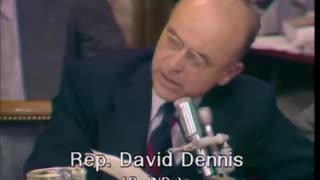 9:22:13
9:22:13
The Memory Hole
1 month agoNixon Impeachment Hearings Day 4 (1974-07-26)
511 -
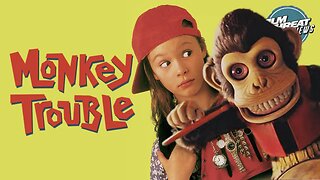 8:43
8:43
Film Threat
22 hours agoTHE MONKEY | Film Threat Reviews
21.5K1 -
 15:55
15:55
TSPLY
1 day agoThe Media Is Very Afraid Of FBI Director Kash Patel
14.7K21 -
 6:57
6:57
Cooking with Gruel
18 hours agoMake Cheese Great Again
13K10 -
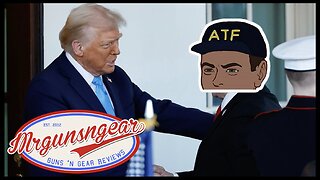 5:17
5:17
Mrgunsngear
21 hours ago $1.84 earnedPresident Trump Has Appointed A New ATF Director
21.7K23 -
 48:17
48:17
Athlete & Artist Show
8 days ago $0.01 earnedS5E1: Chucky Announces First Kid, 4 Nations Face Off, and more!
10.5K -
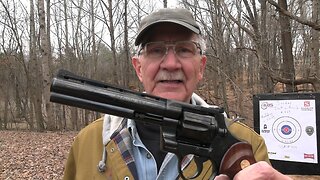 38:30
38:30
hickok45
6 hours agoSunday Shoot-a-Round # 269
25.6K12 -
 1:39:55
1:39:55
Squaring The Circle, A Randall Carlson Podcast
1 day ago#040 Humanity's Expansion Into The Cosmos: A New Age - Squaring The Circle
15.7K4 -
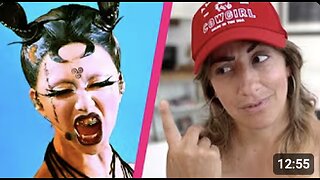 12:54
12:54
ariellescarcella
15 hours agoYou're NOT Queer, Just Annoying And Boring
10.2K9 -
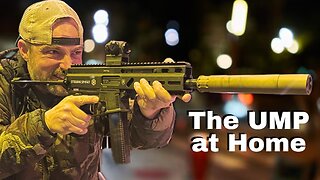 18:57
18:57
Fit'n Fire
12 hours ago $0.03 earnedA PDW That Thumps -- Stribog SP45A3 45ACP
14.6K1